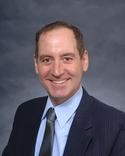2801 Second Street
204
Davis, CA 95618
530-464-8301
dobrist@ucanr.edu
Links
Biography
Education
Ph.D. Hydrogeology, University of Nevada, Reno, 2002. 2002
M.S. Integrative Biology and Plant Ecology, University of Basel, Switzerland. 1998
Employment History
2022 – present: University of California, Agriculture and Natural Resources, Davis, CA. Vice Provost for Academic Personnel and Development
2017 – 2022: University of Massachusetts, Lowell, MA. Department of Environmental, Earth and Atmospheric Science. Chairperson and Professor (tenured)
2007 – 2017: University of Nevada, Reno, NV. Faculty Member, Graduate Programs Hydrologic Sciences; Atmospheric Sciences; Environmental Sciences and Health
2007 – 2017: Desert Research Institute, Division of Atmospheric Sciences, Reno, NV. Assistant/Associate/Full Research Professor
2003 – 2006: Postdoctoral Research Associate. Desert Research Institute, Reno, NV (Atmospheric Science); University of Basel, Switzerland (Environmental Geosciences); University of Nevada, Reno (Environmental and Resource Sciences)
Biography
Dr. Obrist serves as the Vice Provost for Academic Personnel and Development for UC Division of Agriculture and Natural Resources (ANR). His main responsibilities include: (i) successful recruitment, development and retention of UC ANR academics; (ii) support of streamlined performance evaluation of UC ANR personnel; and (iii) personnel development paths and mentoring of UC ANR academics. Previously, Dr. Obrist was a tenured professor in Environmental Science and the chairperson of the Department of Environmental, Earth and Atmospheric Sciences at the University of Massachusetts, Lowell (2017 to 2022).
Research: Dr. Obrist’s research focuses on environmental chemistry and pollution, with a special emphasis on contaminants such as mercury, other trace metals, and persistent organic pollutants. He is interested in the behavior of these contaminants in terrestrial environments and watersheds as well as in their atmospheric chemistry and transboundary transport. He also has been working on greenhouse gas dynamics (CO2 and CH4) and how human perturbations and climate change affect terrestrial carbon sinks. His research is based on experimental field research and laboratory studies and combines methods from analytical chemistry, atmospheric chemistry, soil biogeochemistry, and ecosystem ecology.
Discipline: Dr. Obrist’s academic and educational backgrounds include ecology and ecosystem science, hydrogeology, atmospheric and environmental chemistry, and biogeochemistry. He has published over 85 peer-reviewed publications, including in high-impact scientific journals such as Nature, Nature Geoscience, Nature Reviews, and PNAS. He has a strong record of extramural research funding from competitive federal and state agencies totaling nearly $10 Mio. Dr. Obrist has given more than 230 conference and seminar presentations.
Teaching: Dr. Obrist taught courses, seminars, laboratories and field trips at both undergraduate and graduate levels at the University of Massachusetts, Lowell, the University of Nevada, Reno, and the University of Basel, Switzerland. Classes taught include Biogeochemical Cycles, Soil Science, Soil Science Laboratory, Environ. Impact Assessment & Analysis, Environmental Pollution, Principles of Environmental Science, Global Environmental Studies, Earth Systems: Atmosphere and Oceans, Snow Hydrology, Graduate Seminars, Air Quality Measurements and Data Analysis, and Hydrometeorology.
Select publications (out of 88 peer-reviewed publications)
Landis J, Obrist D, Zhou J, Renshaw C, McDowell W, Nytch C, Palucis M, Del Vecchio J, Lopez F, Taylor V. Quantifying soil accumulation of atmospheric mercury using fallout radionuclide chronometry. Nature Communication, in press. DOI: 10.21203/rs.3.rs-3937465/v1, 2024.
Zhou, J, Bollen S, Roy EM., Hollinger DY, Wang T, Lee JT, Obrist D. Comparing ecosystem gaseous elemental mercury fluxes over a deciduous and coniferous forest. Nature Communications, 14, 2722, 2023.
Obrist D, Roy EM, Harrison J, Kwong C, Munger JW, Moosmüller H, Romero C, Sun S, Zhou J, Commane R. Previously unaccounted atmospheric mercury deposition in a mid-latitude deciduous forest. Proceedings of the National Academy of Sciences of the United States of America, 118, 29 e2105477118, 2021.
Dastoor A et al. Arctic mercury cycling. Nature Reviews Earth and Environment, 3, pages 270–286, 2022.
Zhou J, Obrist D, Dastoor A, Jiskra M, Ryjkov A. Vegetation uptake of mercury and impacts on global cycling. Nature Reviews Earth and Environment, 2, 269–284, 2021.
Howard D, Agnan Y, Helmig D, Yang Y, Obrist D. Environmental controls on ecosystem-scale cold season methane and carbon dioxide fluxes in an Arctic tundra ecosystem. Biogeosciences, 17, 4025–4042, 2020.
Wang S, McNamara SM, Moore CW, Obrist D, Steffen A, Shepson PB, Staebler RM, Raso ARW, Pratt KA. Direct Detection of Atmospheric Atomic Bromine Leading to Mercury and Ozone Depletion. Proceedings of the National Academy of Sciences of the United States of America (PNAS), DOI: 10.1073/pnas.1900613116, 2019.
Jiskra M, Sonke JE, Obrist D, Bieser J, Ebinghaus R, Myhre CL, Pfaffhuber, KA, Wängberg I, Kyllönen K, Worthy D, Martin LG, Labuschagne C, Mkololo T, Ramonet M, Magand O, Dommergue A. A vegetation control on seasonal variations in global atmospheric mercury. Nature Geoscience, 11, 244-250, 2018.
Obrist D, Agnan Y, Jiskra M, Hedge C, Colegrove D, Hueber J, Moore C, Sonke J, Helmig D. Tundra uptake of atmospheric elemental mercury drives arctic mercury pollution. Nature, 547, 201-204, 2017.
Zhao Q, Poulson SR, Obrist D, Sumaila S, Dynes JJ, McBeth JM, Yang Y. Iron-bound organic carbon in forest soils, Biogeosciences, 13, 4777-4788, 2016.
Obrist D, Peleg M, Tas, E, Matveev V, Faïn X, Tas E, Asaf D, Luria M. Bromine-induced oxidation of mercury in the mid-latitude atmosphere. Nature Geoscience, 4, 22-26, 2011.
Volk M, Obrist D, Novak K, Giger R, Bassin S., Fuhrer J. Subalpine grassland carbon dioxide fluxes indicate substantial carbon losses under increased nitrogen deposition, but not at elevated ozone concentration. Global Change Biology. 17, 366–376, 2011.

